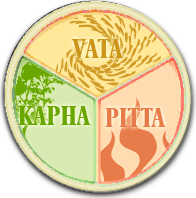RESPIRATORY HEALTH

 Categories in Respiratory HealthNose and SinusesPhlegmThroatLungsEarsIntroduction to the LungsRespiratory health is essential to vital living. The lungs infuse the body with life giving oxygen and energize the entire body. Humans can survive for days without food or water, but take away the breath and a person will quickly die. A person with healthy lungs feels fresh, vital, and awake. The more the lungs become congested with mucus and fluids, the more the person will feel tired, groggy, and sad.The lungs are unusual among organs because they are filled with air and are relatively dry. Good circulation helps them stay dry, preventing fluid buildup. Herbs, diet, and lifestyle choices that help the lungs stay dry generally improve respiratory health. The lungs thrive when they are both dry and warm. Cold, damp conditions make the chest and body feel heavy. Blood chemistry has a strong effect on the lungs. Rich, sweet blood increases mucus formation and fluid buildup. Thus, cakes, cookies, wheat, dairy, and other rich foods can put a strain on your lungs because they make the blood sweet and rich. They should be avoided whenever you have mucus congestion. The heat from spices, on the other hand, increases your heart rate and gets your blood moving. This keeps your lungs dry and improves lung immunity. Hot spices also increase your respiration rate, oxygenating you, and making you feel courageous and bold. So, eat spicy food when congested to clear out the traffic jam and get things moving again! Congestion and mucus are not always the cause of lung problems. Sometimes, the opposite can happen and the lungs become too dry. A light diet would aggravate lung dryness in this case. When the lungs are too dry, sweeter foods are actually recommended. Ayurveda will always try to uncover the unique imbalance and root cause of a lung disorder, rather than adopting a "one size fits all" approach. The lungs are very sensitive to toxins (ama). For all lung conditions, eliminate ama from your body by keeping the bowels clean with laxatives and avoiding foods that cause gas and bloating. Avoid dust, air pollution, and chemicals which can harm the lungs. Whenever you have a respiratory condition in the winter, wear a scarf over your mouth to avoid breathing in very cold air directly. The Lungs and LongevityAyurveda suggests that calm breathing can help you live longer. According to Ayurveda, the slower and deeper the rate of respiration, the longer the lifespan. The quicker and shallower the respiration, the shorter life will be. This example can be seen in nature. A tortoise takes just three to four breaths per minute and will live to 100 years and beyond. A mouse, on the other hand, takes between 100 to 200 breaths a minute and lives just a few short years.Long life, however, is not the only goal. The chest is also the seat of courage, where we boldly meet our destiny. Long, slow breaths have the quality of meditative stillness. Quick, short breaths have the quality of boldness and action. Both are needed for a life well-lived. Your breathing rate is connected to your thinking rate. One of the best ways to calm down your mind is by relaxing your breath. Breathing should always be smooth, not choppy. On a full inhalation you should see your belly expand, called belly breathing. This means you are breathing deeply and that your abdomen is relaxed. Basic Physiology of the Respiratory TractEach inhalation feeds the cells of your body with rich oxygen. Through exhalation, the lungs clean your body of wastes, particularly carbon dioxide. The breath also plays a vital role in maintaining body temperature and the rate of circulation, both of which can increase or decrease with the rate of respiration.The health of the respiratory system lies not just with the lungs, but also the sinuses, nose, mouth, pharynx, larynx, trachea, bronchi, and the brain. The respiratory system maintains adequate fluid secretions in the lungs so gaseous exchange can occur. These fluid secretions also support and protect the lungs. The fluids of the respiratory tract are called avalambaka kapha, and have their source in the sugars and carbohydrates absorbed during the digestive process (kledaka kapha). Vata type processes in the nervous system (prana vayu) control the breath rate, depth of inhalation, and the tension in the breath. When these are disturbed, breathing becomes erratic. Pitta type processes (bhrajaka Pitta) bring the heat that is responsible for maintaining blood flow to the lungs, while Kapha processes secrete the lung's protective mucosal lining. Common AilmentsAlmost everyone will be struck with a respiratory ailment, such as a common cold, at some point in their lifetime. Imbalances in the respiratory system can stem from a number of internal and external factors including pollutants, irritants, toxic chemicals, stress, improper diet, poor circulation, or a cold, damp environment. Generally, warmth and dryness supports the lungs while cold and dampness weaken the lungs. Strong circulation protects the lungs from filling up with fluids. This is why poor circulation in the elderly makes them susceptible to conditions such as pneumonia.CongestionOne of the most common complaints in relation to respiration is mucus congestion. Congestion can occur in the lungs, nose, or sinuses and leaves you feeling dull, groggy, and drained. The mucus sometimes lodges deep in the lungs, leading to crackling noises on exhalation. In most cases, mucus is associated with cold, slimy Kapha. However, there are many types of mucus and congestion. To dissolve wet, Kapha-type mucus, an herb called pippali may be used. Genetically, Pippali is a relative of black pepper. Like black pepper, pippali is hot and gets your heart pumping, helping to dry out the lungs. You can also try lung-friendly essential oils like eucalyptus in a diffuser. Cardamom is an aromatic spice that liquefies mucus, and as a bronchodilator helps open up airways. Daikon is an excellent warming food that helps to heat and dry out lungs that are cold and damp. Honey & Spice Throat Coat is a home remedy for mucus congestion on Joyful Belly that you can make in your own kitchen.Allergens & AsthmaTightness, constriction and spasms in the respiratory tract can accompany allergens and asthma. The lungs may be inflamed, and feel hot and rough. Generally, when inflamed or reactive the lungs and the immune system will need to be sedated, primarily by eliminating ama (toxins). Warm, diaphoretic bitters such as celery and oregano will simultaneously break up phlegm in the lungs and dilate airways. They will also reduce Pitta in the liver, calming the immune system. Licorice tea works particularly well as a respiratory anti-inflammatory and is useful in Pitta congestion. Be sure to add a few drops of mahanarayan oil to your tea for heat and bronchodilating action.Dry CoughThe dry, rough qualities of Vata can lead to a persistent, dry cough. Coughing tends to get worse at night because, when you are relaxed, you feel a tickle or irritation in the back of the throat. This is frustrating because it makes sleeping and resting difficult when sick.Try to keep the throat relaxed while in a coughing fit to minimize irritation, which will only make the coughing worse. If your nose is stuffed up, you may be forced to breath through your mouth, which will also irritate your lungs and make your coughing worse. Over several days, a dry cough can develop into wheezing and tightness in the chest if the lungs are not properly protected. Soothe the lungs by keeping a humidifier in the room. This is essential to prevent a dry cough from descending deeper into the lungs. A Spiced Milk Honey Lung Tonic will nourish and moisten the lungs, which is especially good for susceptible Vata individuals. Add licorice root for even stronger soothing, coating effect. Lemon & Honey Ginger Tea is also helpful. The sourness in lemon and the sweetness in honey moisten the throat, offering reprieve and comfort. Ginger is a cardiac stimulant that increases blood flow to the lungs which will help eliminate excess mucus. Lung MaintenanceFor daily maintenance and cleansing of the respiratory tract, try a neti pot with a saline solution in the morning and apply nasya oil to the nostrils each evening before bed.These Lung tonics can help build strength and nourish tissues, particularly after a period of illness. First among lung tonics and immune boosters is chyavanprash, a famous herbal jam given to kids and adults alike to prevent and reduce the severity of coughs and colds! ConclusionHealthy lungs bring vitality (prana). That's why the respiratory system in Ayurveda is called prana vaha srotas. The lungs need to be nurtured and cared for so they can fulfil their life-sustaining role each day. With these tips you will not only prevent illness, but but feel happier and brighter every day.Herbal Actions Affecting Respiratory Health
HOW AYURVEDA WORKSARE YOU WONDERING HOW AYURVEDA CAN HELP YOU?WHY IS AYURVEDA THE RIGHT SOLUTION?Ayurveda strengthens the body while opposing disorders. It takes a holistic, systemic approach that looks at the whole body. Ayurveda shows how to interpret signs and symptoms of imbalance, and how to address them using diet, lifestyle adjustments, and herbs. It shows a person how to optimize their health on a continual basis. You can't take the doctor home with you, but you can take Ayurveda home with you. Ayurveda is the most advanced and easy to use home system for self healing.HOW DOES AYURVEDA WORK?Ayurveda starts by identifying your body type, which identifies certain tendencies in your body to get sick (as well as identifying your strengths). It uses body type to determine the likely root causes of your disorders. Next, Ayurveda analyzes the nature of your disorder. It fits all your signs and symptoms into a pattern, expressed as a combination of biocharaceristics (gunas). For example, you may have a heat disorder, a cold disorder, or an oily disorder, etc. This simple categorical approach shows you how to correct systemic imbalances and strengthen your body as a whole.On Joyful Belly, we've created an extensive categorization of food so you can easily match food to your imbalanced biocharacteristics. By eating an optimal diet that balances your biocharacteristics, your whole body is strengthened and the conditions that created the disorder are removed. Once the root causes of the disease are removed, the disease lessens in strength or disappears altogether. Additional remedies - such as herbs and lifestyle practices - focused on the specific disorder, can greatly enhance your healing. GET STARTEDTo get started on your Ayurvedic journey, we first recommend that your find your body type by taking our free quiz. In Ayurveda, every solution is based on your unique body type, so by taking this quiz, you’ll get the best results. |
Join Joyful Belly.
Want our top Ayurvedic recipes and health tips?Subscribe to our free newsletter!








